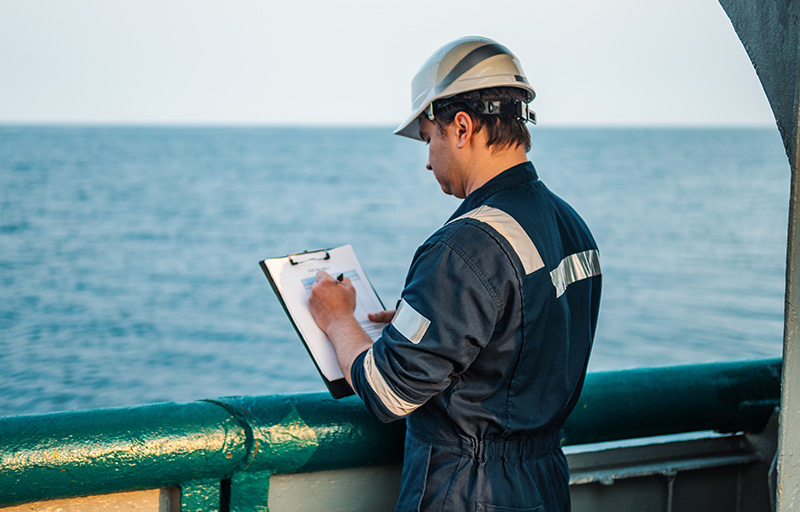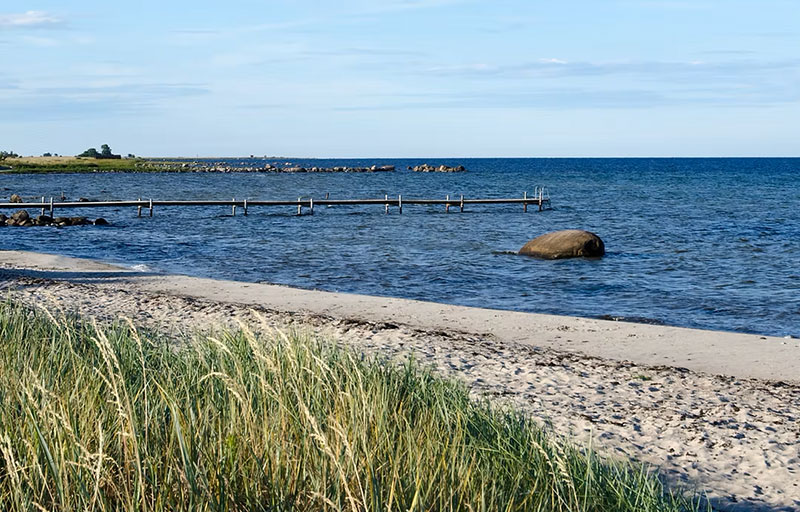our solutions
Innovative solutions for coastal and nearshore environmeltal protection
The Flexible Filtering Environmental Protection Barge – FEB-I
FLEX-FEB ApS has designed, built and patented the world’s first Flexible Filtering Environmental Protection Barge. The barge was built in collaboration with Søby Shipyard, one of Denmark’s most innovative shipyards.
The FEB-I is modular and flexible, and easily configurable to meet the individual customers’ needs. Transport and handling of the FEB-I, individually or 4 units stacked in a cradle, is easy, with already available standard equipment – anywhere in the world. In addition to the FEB-I, FLEX-FEB is continuously developing additional functional equipment to be used with the barges.
Thus, the FEB-I delivers a capacity to be used on a daily basis to clean ports and coastlines of surface waste, and at the same time it constitutes an immediate deployable emergency asset in the event of a local oil pollution scenario.
The advantages of the barge
On-site filtration capability
In one single operation, the FEB can collect oil-mixed water (and/or other waste) from the surface of the sea, filter the water, and return the purified water back into the sea.
The filtration functionality is based on simple physics: Oil is lighter that water and will float on the water. When oil mixed water is poured into the hold of the barge, the oil will separate from the water and remain at the top and the water will sink to the bottom of the hold where it will exit through a specially designed hydrophilic filter which allows water to pass through while stopping the oil.
Constant draft and capable of operating in shallow waters
The FEB is constructed with a hold in the center and pontoons for bouancy in the sides, as well as in the bow and stern. There is a hole at the bottom of the hold, which means that there is an open connection between the hold and the surrounding water through a special hydrophilic filter.
This construction implies that the draft of the barge will always be constant, and that the barge is very stable.
The constant draft of the FEB-I is only 0.6 meter, which means that it can be operated in shallow waters, e.g. near a beach or a coast where most conventional oil collection vessels are not capable of operating.
Easy to operate
Due to the simplicity of the FEB, the operating personnel do not need long special training to operate it. Ordinary seamanship is sufficient, and the barge and its functional equipment are intuitive to operate.
TEU-format
The FEB-I has the foot print of a standard 20’ ISO shipping container and is equipped with corner castings. Four FEB-I stacked in a transport cradle complies with the TEU-format, and thus the FEB-Is may be transported and handled worldwide with already available equipment.
The 20’ format also allows for storage and transport of the FEB-I on a light trailer, which may be towed by a medium sized family car.
Maintenance free
The FEB-I and accompanying functional equipment are built in seawater-resistant aluminum which requires no (or minimal) maintenance. The FEB-I may be stacked in a transport cradle, or on a trailer, and left almost unattended until deployed for operation. Furthermore aluminum is fully recyclable.
Light
The FEB-I only weights about 1,000 kg, including bulkheads, deck planks, deck plates and mounting equipment for e.g. oil skimmers.
Due to its light weight, the FEB-I has an additional buoyancy of 300 kg to accommodate e.g. an oil skimmer and/or a hydraulic power unit etc.
Multi-functional
FEB-I is designed for the purpose of collecting oil from the sea, lakes, rivers and canals, etc.
However, the barge is multifunctional, and can therefore also be used for collecting seaweed, eelgrass, plastic and other waste floating in the surface, depending on the type of surface skimmer used.
In addition, the barge can be used as a work platform, for collecting clean water from a polluted area, or even for transporting fish fry.
Short response time and highly mobile
Due to the light weight, low (no) maintenance requirements and the 20’ container format, the FEB-I is always ready for mobilization and transport to the deployment site – either individually on a trailer, or up to 4 units stacked in a transport cradle on a truck.
With the trailer, the FEB-I can be launched from a port via a ramp or by crane, or directly from the beach. Using the transport cradle, several FEB-I can be launched by crane in a port or loaded onto a mother ship for later launch in the area of operation.
Compatible with conventional oil skimmers
The FEB-I is often shown together with FLEX-FEB’s self-developed electrically powered belt skimmer, which has the advantage of being remotely monitored and controlled, thus enabling autonomous operation.
However, the FEB-I is flexible and can easily operate together with most smaller or medium sized oil skimmers, regardless of make, as long as the total weight of the skimmer and power unit does not exceed 300 kg.
“Capacity Extender”
When using the FEB in combination with, or as an add-on to already available oil collection equipment, efficiency and capacity increase dramatically.
Even the best available oil skimmers will typically collect a minimum of 80% water with the oil – and for light oil types close to 99% water – resulting in a shortage of tank and transport capacity for the collected mix of oil and water.
When pumping the mix of oil and water into the FEB, the barges on-site filtration capability enables a concentration of close to 100% oil, which dramatically reduces the requirement for tank capacity.
Low CAPEX
The FEB-I is a functional capacity, like e.g. a snowplow that can be mounted on a regular truck. This means that you only invest in the core functional equipment – the oil collecting and/or filtration capability; not supporting equipment like propulsion-, navigation- and communication systems etc., which are expensive. The deploying capacity, e.g. a small vessel, can be provided/sourced locally if and when needed.
Low OPEX
Due to the simplicity of the FEB-I, the barge does not require current maintenance and frequent tests to maintain its operational readiness. Likewise, the operating personnel do not need long special training and frequent brush-ups to operate and maintain the FEB-I.
Once FEB-I is operational, the ability to operate FEB-I autonomously also means that personnel attrition is reduced. No need for 24-7 manning!
Let's get in touch!
Don’t hesitate to contact us if you want to know more
Maritime Contingency Planning
FLEX-FEB offers cost analysis of emergency response models based on legal requirements and relevant maritime risk scenarios to ports, authorities, and municipalities.
The contingency models are based on the functional approach (rather than a specialized approach), which ensures a locally based effective and financially attractive contingency.
The functional contingency concept is characterized by the fact that the deployment of the functional equipment and the transport platform (e.g. a vessel or a truck) are separate, which means that the transport platform can be used in everyday life for normally occurring operational tasks.

Maritime Environmental Consulting
Increased urbanization of many ports and growing public awareness of maritime environmental challenges, as well as focus on a risk-based scaling of emergency response plans, has led to increased demand for maritime environmental consultancy services.
FLEX-FEB offers advice on maritime environmental protection to e.g. municipalities, ports, emergency services, shipping companies and the offshore sector.

